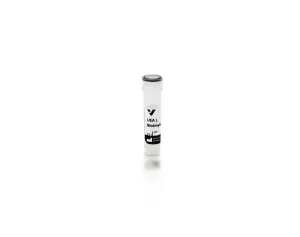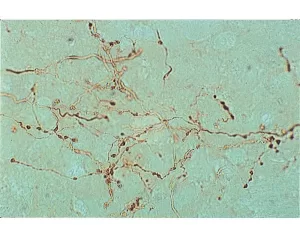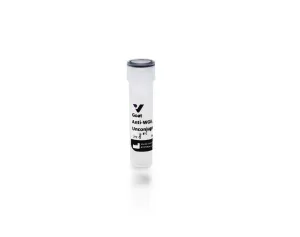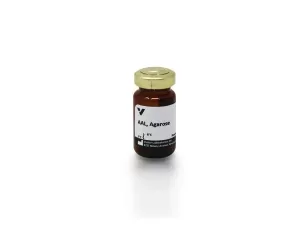Tomato lectin (from Lycopersicon esculentum) is an effective marker of blood vessels and microglial cells in rodents. Conjugation of the lectin with a fluorophore facilitates fast, one-step detection and visualization using intravascular perfusion methods or direct application to tissue sections.
| Unit Size | 2 mg |
|---|---|
| Applications | Glycobiology |
| Recommended Usage | Although many buffers can be employed for reconstituting this lectin, 10 mM HEPES buffered saline, pH 8.5, 0.1 mM CaCl2 is recommended. |
| Recommended Storage | 2-8 °C; for long term storage, aliquots may be stored frozen or preserved with 0.08% sodium azide in the recommended buffer and stored at 2-8 °C |
| Conjugate | Unconjugated |
| Sugar Specificity | [GlcNAc]1-3, N-Acetylglucosamine |
Tomato lectin (from Lycopersicon esculentum) is a very stable single subunit glycoprotein containing about 50 percent arabinose and galactose and may form multimeric aggregates in solution. Tomato lectin, although sharing some specificities with potato lectin, Datura lectin, and wheat germ agglutinin, has been reported to be dissimilar in many respects. LEL binds well to glycophorin and Tamm-Horsfall glycoprotein and has been used effectively to label vascular endothelium in rodents.
Inhibiting/Eluting Sugar: Chitin Hydrolysate
Applicable patents and legal notices are available at legal notices.




Stay in the Loop. Join Our Online Community
Products
Ordering
About Us
Application
Resources

©Vector Laboratories, Inc. 2025 All Rights Reserved.
To provide the best experiences, we use technologies like cookies to store and/or access device information. Consenting to these technologies will allow us to process data such as browsing behavior or unique IDs on this site. Not consenting or withdrawing consent, may adversely affect certain features and functions. Privacy Statement
How do I Request a Quote?
To request a quote for products: